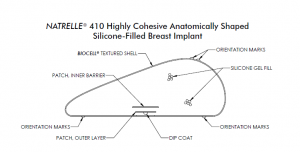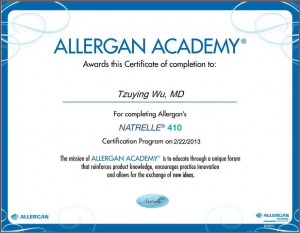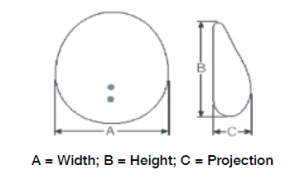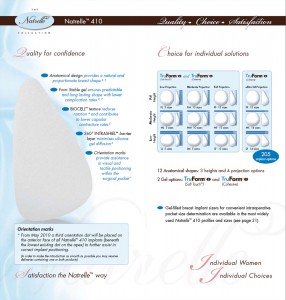 Dr. Tammy Wu, Board Certified Plastic Surgeon, was the first Breast Augmentation Surgeon in the Central Valley to be certified to use the Natrelle 410 Breast Augmentation Implants. She told me that it really is no big deal to have been considered the first. She said that she was sitting at her computer when a regional-wide email was sent out to all the plastic surgeons in the area. She just happened to have opened up the email and clicked on the link for the certification on-line course. When she finished the course, she received a friendly email from the Breast Implant Representative from Allergan that she was the first person to successfully finish the online course and receive official certification to use the implant.
Dr. Tammy Wu, Board Certified Plastic Surgeon, was the first Breast Augmentation Surgeon in the Central Valley to be certified to use the Natrelle 410 Breast Augmentation Implants. She told me that it really is no big deal to have been considered the first. She said that she was sitting at her computer when a regional-wide email was sent out to all the plastic surgeons in the area. She just happened to have opened up the email and clicked on the link for the certification on-line course. When she finished the course, she received a friendly email from the Breast Implant Representative from Allergan that she was the first person to successfully finish the online course and receive official certification to use the implant.
This blog is written by Dr. Calvin Lee, MD. It is meant to be a self-educational note taking blog for Dr. Calvin Lee to help understand Dr. Tammy Wu’s plastic surgery practice.
ALLERGAN ACADEMY’s mission is to educate through a unique forum which reinforces product knowledge, encourages practice innovation & allows for the exchange of ideas.
Natrelle 410 Breast Implant Schematics

NATRELLE® 410 Breast Implants incorporate orientation marks on the anterior and posterior sides
of the shell surface to assist in aligning the implant vertically in the pocket. Two orientation marks
are present on the anterior side of the implant in the lower pole. Depending on the style, there
will be either 3 or 4 orientation marks on the posterior surface of the implant.
What is the Natrelle 410 Breast Implant?
- Highly cohesive Anatomically Shaped Silicone-Filled Breast Implants
- An alternative to round implants
- More true to the shape of a woman’s breast
- Approved by the FDA on February 20, 2013
- Made by Allergan (the makers of Botox, Juvederm, Latisse, Tazorac and much more).
- Natrelle has a landing page for these implants.
- It has a gradually tapered slope – thus called “shaped” rather than “round” implants.
- The highly cohesive nature of the gel holds together and no gel migration has been observed through 7 years in ruptured implants.
- According to their website, The Natrelle 410 breast implant has a 69% lower capsular contracture rate than Natrelle Round Silicone Filled Implants at 6 years.
- Allergan has a directions for use webpage for surgeons on this implant.
- Indicated for women age 22 years or older.
- The highly cohesive gel has also been called the gummy bear breast implant
- Reasons to avoid the Natrelle 410 Shaped Highly Cohesive Breast Implant
Natrelle Dimensions
- The breast implant comes in many different sizes
Visit Dr. Tammy Wu’s Breast Augmentation webpages for more info
- Breast Enlargement options for cosmetic breast surgery.
- Breast Surgery Consultation with Dr. Tammy Wu – includes lift and other enhancement options.
- Breast Augmentation FAQ written by Dr. Tammy Wu






